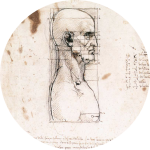 Diffuse low-grade gliomas
Diffuse low-grade gliomas
V - PROGNOSTIC FACTORS
Advanced age, the presence of a neurological deficit at diagnosis and poor functional status (Karnofsky score <70) are factors of worst prognosis (13,40,57)
In terms of imaging, a larger tumor volume and DLGGs which cross the midline correlate with a shorter overall survival. Thus, a greater than 10 cc and a 30 cc volume a fortiori correlated significantly with a higher risk of rapid malignant transformation and shorter survival (4).
The growth rate is inversely proportional to the survival (56). A recent study showed that the median survival was greater than 15 years for a growth rate of less than 8 mm / year reduced to 5 years for a growth rate of 8 mm / year or more (51).
The correlation between contrast enhancement and prognosis is controversial, but it seems that the occurrence of contrast enhancement and a nodular enhancement are negative factors (52).
Low VCS and low PET-MET uptake correlate with longer overall survival. The correlation between survival and VCSr has been replicated in different institutions (7).
Oligodendrogliomas have a better prognosis than astrocytomas, while oligoastrocytoma have an intermediate prognosis.
MIB-1 index inversely and independently correlated to the survival in multivariate analysis on grade II and grade III astrocytomas. Likewise for grade II and III oligodendrogliomas. The threshold at which the prognosis changes varies with studies between 3% and 8%, but prognosis continues to worsen with an increase in the index.
In grade II astrocytomas, the median survival was 72 months if the MIB-1 index was> 3% and 23 months if> 3%. In a series of grades II and III oligodendrogliomas, the median survival was 3.4 years and 1.1 depending if the index was higher or lower than 5% (15).
At the molecular level, complete deletion of chromosome 1p (with or without deletion of 19p) is favorable prognostic factor (76). The methylation of the MGMT promoter could predict longer survival in patients treated with Temozolomide whereas the value of IDH1 mutation remains controversial.
 Encyclopædia Neurochirurgica
Encyclopædia Neurochirurgica

